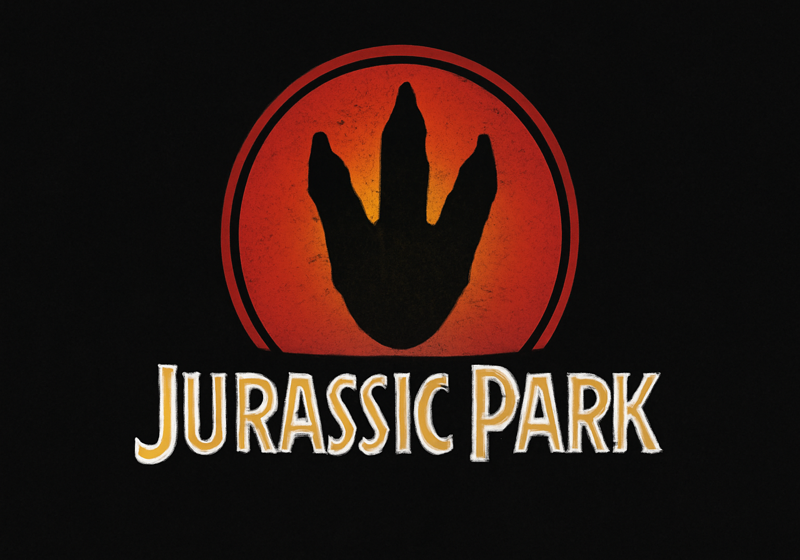Table of Contents
A mysterious theme park. A tropical island off the coast of Costa Rica. An eccentric philanthropist obsessed with dinosaurs. This should be enough to set the pulse racing of any nineties film fan.
Because it’s the scenario for Jurassic Park, Steven Spielberg’s blockbuster big-screen adaptation of Michael Crichton’s eponymous novel. Hitting American cinemas on 9 June 1993, the film smashed box office records to become the biggest grossing film of all time (until it was eclipsed four years later by another cinematic juggernaut, Titanic).

Jurassic Park has all the ingredients for success: an expertly crafted sci-fi story where dinosaurs are brought back to life using cutting-edge biomedical technology; futuristic images of prehistoric creatures produced with computer-generated imagery (CGI); and adventure, terror and suspense. Plus one more thing: an unforgettable poster that was an instant classic.
Today, we bring you the story behind the iconic Jurassic Park movie poster and its unmistakeable T. rex logo .
How the Jurassic Park poster was made
If the Jurassic Park poster is very essence of pop-art minimalism – comprising just a logo and that unique lettering – it’s down to one man: Steven Spielberg. The Jurassic Park director expressly forbade any images from the film appearing on the poster.
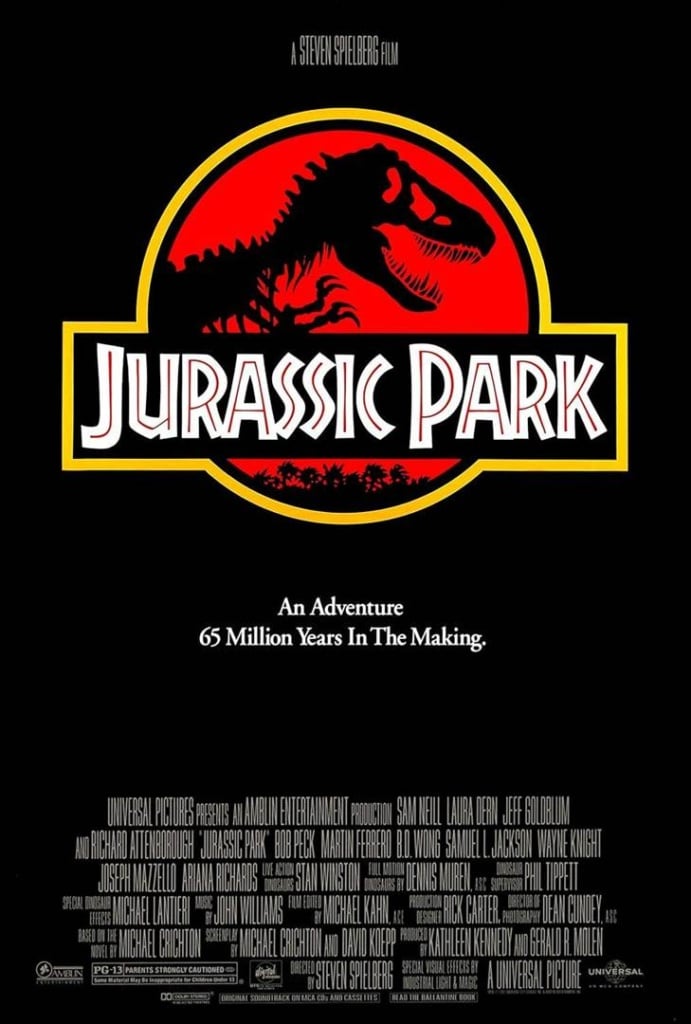
To take on this challenge, Universal Pictures, the studio producing the film, hired a big shot from the poster world: John Alvin. The American graphic designer already boasted a portfolio packed with iconic posters for acclaimed films like E.T., Blade Runner, The Lion King, Gremlins, Frankenstein Junior and Space Jam.
Alvin submitted a series of drafts to the studio with ideas that included dinosaur footprints and a close-up of an eye. But Spielberg insisted the poster should feature just the logo for the imaginary theme park in which the film is set: Jurassic Park.

And so the marketing director for Universal Pictures, Tom Martin, set about producing the legendary logo. It was to appear not just on posters and merchandise, but in the film itself. In the video below, we see it emblazoned across the bonnet of a Jeep at the draw-dropping moment when a brachiosaurus first hoves into view, a scene that Empire magazine ranked as one of the most magical in cinema history.
That T. rex image came from… a book!
Over 100 different versions of the logo were produced, but in the end the studio opted to re-purpose a graphic from the cover for the novel on which the film is based: Michael Crichton’s Jurassic Park.
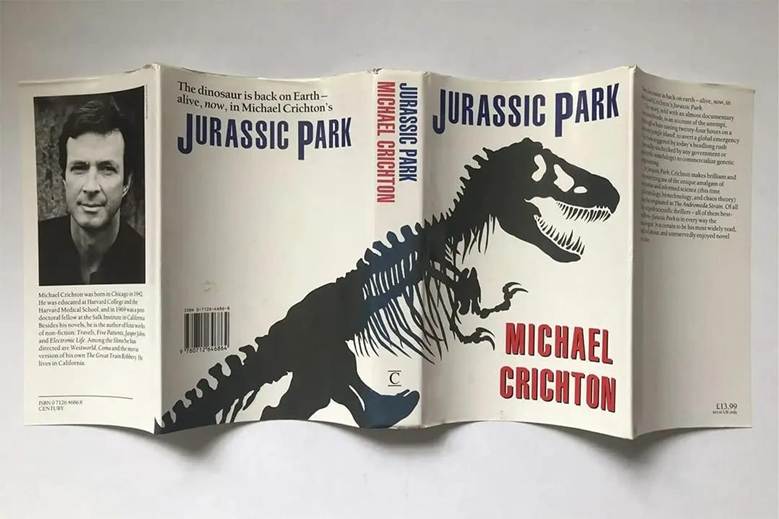
So in a neat bit of continuity, the dinosaur in the Jurassic Park logo is the same one that appeared on the cover to the American first edition of the novel. The man behind that cover was the publisher’s in-house graphic designer at the time, Chip Kidd.
His idea – as he explains in great detail here – was to produce a one-of-a-kind design that was nothing like the usual covers for books about dinosaurs. Naturally, that meant no artistic reconstructions of the Earth’s prehistoric inhabitants! So Chip Kidd started leafing through early-nineteenth century palaeontological drawings. That’s when he came across a sketch of a T. rex by American palaeontologist Henry Fairfield Osborn who – among other things – was the man who gave the fearsome dinosaur its name!
The finishing touches to the Jurassic Park poster: logo, lettering and tagline
The image taken from the novel’s cover was placed inside a sort of badge on red background with a yellow border. Colours that did not augur well…
Also added to the logo was some jungle at the bottom to emphasise the size of the dinosaur and then, of course, the famous lettering. It was designer Mike Salisbury who chose the font – Neuland [we’ve already told the story of this typeface and others used by Steven Spielberg].

The logo retains its ominous power to this day and remains one of the most emblematic images of nineties cinema. But Chip Kidd was not happy about Universal’s choice (perhaps also because the studio never bought the rights to the cover he designed). ‘They didn’t alter the dinosaur drawing in any way. They just added all this stuff to it that my design teacher would not have approved of at all,’ he recently said in a wide-ranging and insightful interview in which he explained how the approach to graphic design in cinema is quite different to that of publishing.

Now all that was needed to complete the poster was the right tagline. The graphic design is careful not to reveal too much about the film: it just intimates that it has to do with a strange ‘Jurassic park’ and the jagged T-rex teeth suggest that things take a turn for the worse. The tagline ‘An adventure 65 million years in the making’ ) deftly raises the stakes. And the rest, as they say, is history!
Posters for the Jurassic Park franchise
So successful was the first Jurassic Park poster that the rest of the franchise – with six instalments to date – has never strayed far from the original and its memorable logo.
The first sequel came out in 1997. The Lost World: Jurassic Park was also directed by Steven Spielberg and is based on a follow-up novel that Michael Crichton – somewhat reluctantly – agreed to write after the success of his first. For the poster, Universal didn’t change much: it’s practically identical to the original, with just a rock-like texture added, along with a new tagline.
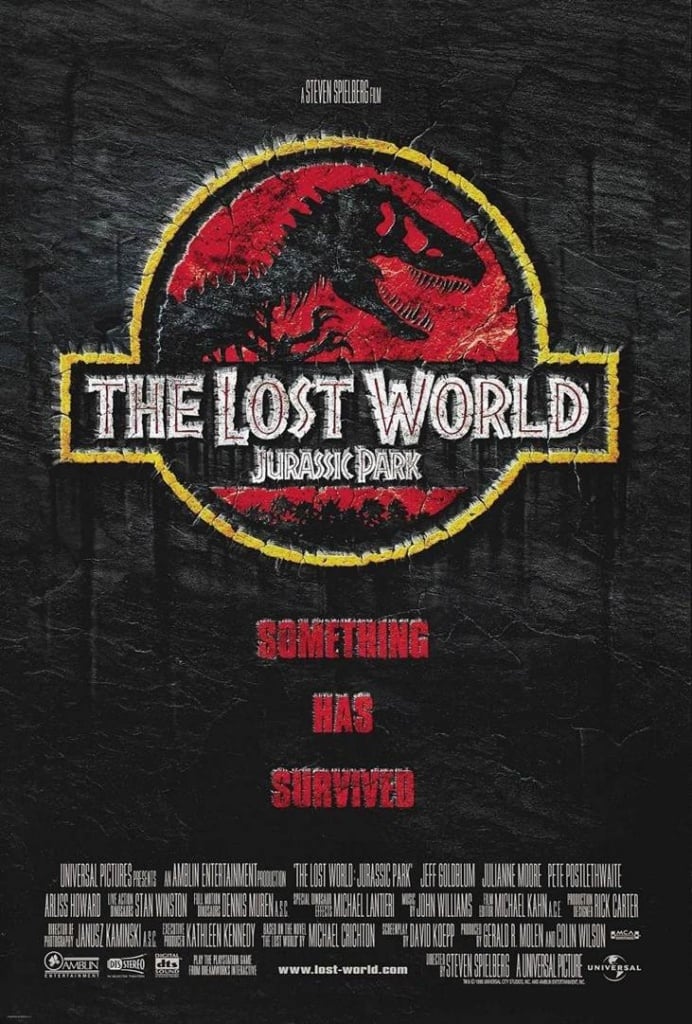
From the third instalment of the franchise – which would become known as Jurassic World – Spielberg was no longer in the director’s chair. And the posters began to show live dinosaurs: first just a pterodactyl’s shadow, then images taken from the films.
But the Jurassic Park logo remained ever present.
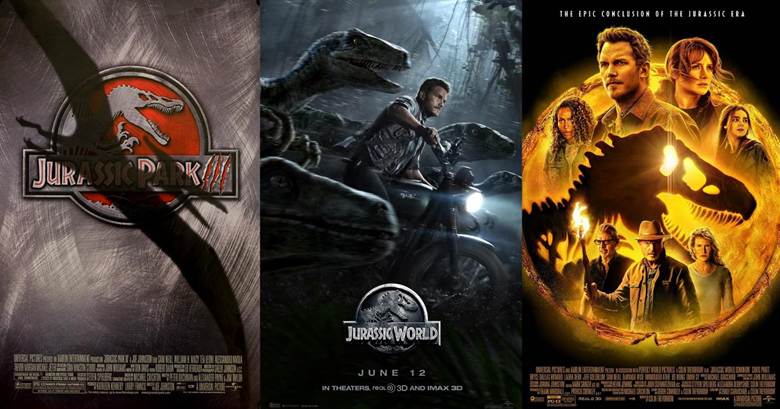
Some 30 years on, the original poster is still hard to beat. Which is why fans gave a lukewarm reception to the poster for the latest chapter in the saga, the much-anticipated Jurassic World: Rebirth, released in the summer of 2025.
An underwhelming effort, the poster features yet another restyled logo along with images of the latest characters to appear in the series.

Spoofs, homages and… an unusual unofficial poster!
The original Jurassic Park poster is the perfect advertisement for one of the biggest blockbusters of all time. Simple, eye-catching and a little unsettling, it’s a tantalising teaser of the adventure to come!
Which is why it’s one of the most spoofed and homaged posters in the history of cinema – and the internet. The distinctive logo has been repackaged and repurposed in all manner of guises – from the scientific to the ironic.

Some parodies of the Jurassic Park logo. Images: theshirtlist.com ; a-dinosaur-a-day.com; webneel.com
There have even been cinematic spoofs (complete with posters), which have largely flopped, like the Italian send-up Chicken Park. But we want to wrap up this article with a very different Jurassic Park poster that was actually used to promote the film in a cinema.
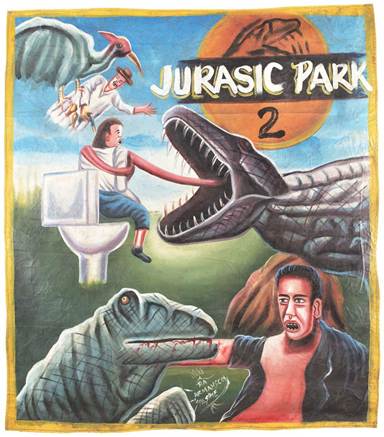
It’s a Ghanian poster used to advertise the Jurassic Park sequel. As we’ve talked about before on this blog, for copyright reasons, some releases for American blockbusters are promoted using unofficial, locally designed posters. This one may not have the impact of the official poster, but it’s certainly original!
What does the Jurassic Park poster mean to you? Have you produced a parody – or used it to inspire your own graphic design work?

